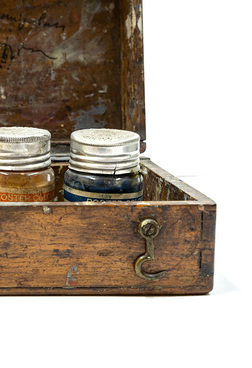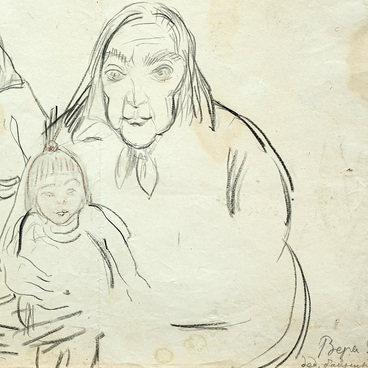The life of Ekaterina Nikolaevna Khlebnikova (nee Verbitskaya; 1849–1936) was quite eventful. Velimir Khlebnikov used some facts from his mother’s biography for the image of the “lady” in the poem “A Night Before the Soviets”.
She was one of the first students of the Smolny Institute, but did not graduate. She was a nurse in the Russo-Turkish War and taught poor children for free. As a cousin of Alexander Dmitrievich Mikhailov, she had a deep connection to the Narodnaya Volya movement: Mikhailov passed letters from the Peter and Paul Fortress to his supporters through her. After getting married, Ekaterina Nikolaevna was busy with family matters, raising five children.
This picture is believed to be taken in the 1890s in one of the most remarkable photo studios in Astrakhan.
Initially, the studio belonged to Lavrenty Vikentievich Klimashevsky. Interestingly, a photograph of a dish that Emperor Alexander III received as a gift from the Astrakhan society in 1883 was taken in his studio.
Due to poor health, Klimashevsky transferred the rights to his wife Stanislava Ivanovna, and she achieved great success in this field.
The photo studio specialized in personal and group portraits, landscapes, views, and, in addition, magnified small-format photographs; its clients were Father John of Kronstadt, the writer Nikolay Gavrilovich Chernyshevsky, the merchants and patrons of the arts Ivan Ivanovich and Alexander Ivanovich Gubin and other famous personalities. Passepartout (mats) for cards were ordered from Vienna, Moscow, and Warsaw.
The design of the letterhead was changed seven times. Initially, it simply read “Klimashevsky’s Photographic Studio in Astrakhan near the Police Bridge” and was decorated with portraits of the fathers of the photographic art Daguerre, Niépce, and Talbot. Later, it featured the inscription “Court Photographer of His Majesty the Shah of Persia Stanislava Klimashevskaya” with the image of the medals received.
Klimashevskaya employed highly skilled craftsmen. Having gained a wealth of experience and some capital in her prestigious studio, they often opened their own businesses. One of these photographers was Vladimir Egorov, who probably took pictures of Viktor and Boris Khlebnikov as children.
It has not been established who took the photo on display, but the picture is a valuable artifact in the museum’s collection: a tiny number of photographs of Ekaterina Nikolaevna have been preserved, they are kept by private individuals and in the Russian State Archive of Literature and Art.


